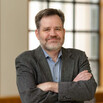Wack ’18 on Interprofessional Student Hotspotting Collaborative
Solomon Fellow Claudia Wack ’18 was one of two law students in the country to participate in this year’s Interprofessional Student Hotspotting Collaborative, an initiative organized by the Camden Coalition of Healthcare Providers. The six-month program brings students together from across different disciplines in order to work with patients who have complex medical and social needs. Often referred to as “high utilizers,” these patients struggle to navigate healthcare systems and obtain effective treatment: they experience poor medical outcomes despite incurring significant expense. Through the Interprofessional Collaborative, the Camden Coalition seeks to train future providers and advocates on effective, patient-centered interventions, an approach that has won the organization plaudits for its on-the-ground work in New Jersey. Below Wack answers questions about the event.
How did you get involved in this year’s hotspotting collaborative?
Last year, I was a Co-Director of the Solomon Center’s HAVEN Medical-Legal Partnership, which embeds law students in a clinical setting. As I was wrapping up my tenure in that role, I was approached by a Yale School of Medicine student who was helping to organize an interdisciplinary team. In fact, not only was our student team interdisciplinary, but we also represented a joint collaboration between Yale and Southern Connecticut State University. We were ultimately six in total: two nursing students, a medical student, two future social workers, and myself.
What was it like working with high-utilizing patients?
Challenging but rewarding. Challenging, because these patients often have a complex assortment of medical conditions, due at least in part to the social stresses and deprivations that they experience. When patients have few existing means to address the social factors impacting their health, it becomes extremely meaningful to identify an effective new options and interventions—that’s where the reward comes in, both for the patient and the hotspotting team. At the same time, you can expect to encounter plenty of basic and frustrating hurdles. Almost all of the patients we worked with, for example, relied on “Obamaphones,” and couldn’t afford to purchase new minutes once their free monthly allotment ran out. You have to roll with the punches when you’re working with patients whose housing, transit, and other everyday resources may be unstable more often than not. That’s where it helps to have multiple team members, all bringing different problem-solving skills to the table.
Most of this program’s participants are future healthcare professionals—where do law students figure in?
Law students are relatively new to interprofessional hotspotting, but there is huge room for growth. The ongoing expansion of medical-legal partnerships around the country reflects a recognition that many patients can benefit from legal resources remedies; even an act as simple as helping a patient understand their legal rights in a given context can reduce stress and anxiety. Lawyers have a similar role to play in hotspotting, collaborating with social work and medical professionals, and connecting with patients in a healthcare context. Among the patients we connected with this year in New Haven, I saw numerous examples of how lawyers and law students can meaningfully expand the hotspotting toolset, particularly when patients are dealing with issues like benefit program denials, domestic disputes, and threats of eviction. Patients don’t always think of these “personal” concerns as implicating their medical outcomes, but they can exacerbate symptoms or seriously disrupt patients’ treatment plans when they go unaddressed.
Does hotspotting have a future in New Haven?
Yes, I think absolutely. Our team’s participation in the Camden program this year was an experiment, in multiple senses, but I think that our accumulated knowledge will make it easier for the students who come after us. We’re looking into ways that we can help to fund and institutionalize models like the Camden Coalition’s in New Haven—there’s no dearth of need. In my experience, students across Yale and SCSU want to do this type of work, especially when they can learn and collaborate across different professional programs.


